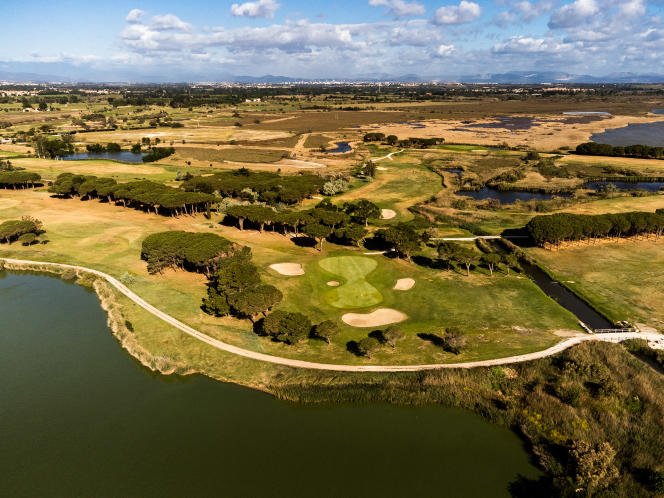There was already drought, grass turning yellow, fungal diseases, the need to water from May to October, trees dying… Now there is also damage or the fear that they will not occur. In recent days, environmental activists have entered golf courses to block holes with cement or plant vegetable gardens on the greens.
At a time when the lack of water is rife in many departments, and when prefectural decrees are multiplying to introduce restrictions on use, this leisure activity is more than ever in the crosshairs of certain environmental activists. “We have been alerted to the fact that actions are planned for the coming weekend”, worries the director of a large golf course near Lyon, referring to the movement of the Earth Uprisings. In their manifesto “100 days to dry them! »always on line despite their dissolution, the activists of this movement particularly pin the golf courses under the banner “luxury hoarders”, just like yachts or Jacuzzis.
” In the Paris region, three golf courses were degraded this week, including those of the Paris Country Club and Domont Montmorency”summarized, Friday, June 23, Pascal Grizot, the president of the French Golf Federation (FFG). The next day, around 5 a.m., activists from Nonviolent Action COP21 entered that of Frégate Provence, in Saint-Cyr-sur-Mer (Var), and engraved with a pickaxe on the route : “Water is a common good. » The establishment filed a complaint.
Economic weight
The practice of golf has been singled out for several years. The federation claims to be aware of this: it has invested in more virtuous irrigation systems, a lawn that is more resistant to drought and wishes to change the regulations on the use of recycled water. The FFG has also signed a framework agreement known as “Golf and the environment 2019-2024” with the Ministries of Ecological Transition, Agriculture and Sports. A text which authorizes the watering of the greens, even in times of “crisis”, the highest threshold of the four alert levels that can appear in the prefectural decrees, provided that the golf course reduces its usual volumes by 80% of consumption.
“It allows us to water more often, every night or two nights instead of every four or five days, because if the green dries out, it takes four to five months to restore it and you have to stop all the activity “, recalls Rémy Dorbeau, director of the Chantilly golf course, in the Oise, and president of the Association of golf course maintenance staff (Agref).
You have 58.2% of this article left to read. The following is for subscribers only.
